Grain 2022: the blockade of ports, the “grain corridor” and the flames of war

Russia’s full-scale invasion affected every part in Ukraine’s state machine. Export — one of the most important drives of the Ukrainian economy — was under threat of destruction. Everyone suffered losses – farmers, shippers and buyers, but Ukraine withstood and continues to accept the challenges of wartime, despite the enemy’s efforts to destroy, in particular, its grain industry, from seaports to elevators.
Ukraine faced a number of forceful problems
The blockade of ports
One of the first economic challenges facing Ukraine is russia’s blockade of Ukrainian seaports. In the first days of the full-scale invasion, the rashists occupied Zmiiny Island in Odesa. Russian ships entered the Black Sea, and several hundred mines were released into the sea. The safety of shipping was under threat. Russian troops even fired several times at ordinary cargo ships trying to leave Ukrainian ports.
As of April, russia blocked 57 ships with 1.25 million tons of grain and oil crops in Ukrainian ports.
Ukraine, together with its partners, was looking for ways to release vessels and resume exports. But no appeals to, if not the end of the war, at least the observance of its laws, did not affect russia. The terrorist country only understood the “language of force” when its troops fled from Zmiiny Island on June 30. The situation in Odesa has become more controlled and safe, the number of shelling has decreased, so it’s time to look for ways to restore the ports.

Grain, that is lost forever
Russia, telling the internal zombified consumer about the “liberation” of the occupied territories of Ukraine, began mass theft of grain from the occupied regions. During three months of occupation, the russians managed to export at least several hundred thousand tons of grain. In particular, the occupiers exported not only grain, but also oil from the occupied part of the Zaporizhzhia region.
The lion’s share of the stolen grain was exported by the russians through the closed Crimean ports.
The Ministry of Foreign Affairs of Ukraine reacted to the crimes of russian federation and called on other countries to refrain from purchasing stolen grain. Some countries ignored the statement of the Ministry of Foreign Affairs and decided not to neglect the purchase of stolen grain. Among them is Turkey, which was justified by the lack of evidence against russian federation, as well as Syria and other countries of the Middle East and North Africa.
The court ordered the arrest of four vessels that carried out illegal activities in the Crimea.
The most famous russian pirate ships are “Matros Pozynych”, “Mikhail Nenashev” and “Matros Koshka”. Two Syrian vessels — Souria and Finikia — are also involved in war crimes. They systematically enter the closed port of Sevastopol and depart from there with loads of grain. russia uses Crimea as a “grey zone” for the transportation of grain it has illegally seized.
Satellite images show that ships are regularly loaded with grain in Sevastopol. In addition, the indicators of grain shipments from Crimea increased sharply precisely after the russian invasion of Ukraine: 100,000 tons of grain every month, against 45,000 tons of grain in January 2022.
The Ukrainian court arrested these vessels in absentia, and also notified the two captains of the suspicion. However, it is currently impossible to bring ships, their crews and owners to account for the export of looted grain. Footage from the satellite and the fact that AIS on ships is turned off are not direct evidence that can be used by the prosecutor’s office. That is why vessels are arrested on suspicion of ships entering the annexed Crimea.
Currently, unfortunately, russia sends hundreds of thousands of tons of Ukrainian grain to Syria, from where it is transported to other African countries. In 2022, the volume of wheat transported by russia to Syria from Sevastopol increased 17 times and amounted to more than 500,000 tons. It is not known whether after Ukraine’s victory it will be possible to compensate for the losses caused by grain theft, because russia falsifies documents for grain and mixes it with its own.

Distruction of the elevators
On those territories, where the russians could not reach with their own hands, in order to steal everything they saw, they fired rockets. Elevators — storage facilities for tens of thousands of tons of Ukrainian grain — came under enemy fire.
According to various sources, due to russian aggression in 2022, Ukraine lost 10-13 million tons of elevator capacity. According to the Kyiv School of Economics KSE, it is about the capacity of 9.4 million tons of simultaneous storage, but analysts did not take into account enterprises in the occupied territories. It will cost about $1.1 billion to repair and restore only the storage facilities in the territory controlled by Ukraine.
Since the beginning of the large-scale war, Ukraine has lost every sixth elevator, according to the calculations of the American organization Conflict Observatory. According to satellite images, it was found that out of 344 captured objects, 75 showed visible damage.
Enterprises in the Kyiv, Vinnytsia, and Zhytomyr regions were hit by russian missile strikes. Elevators in Sumy Oblast and Chernihiv Oblast were damaged in February-March, during the occupation by the russians. Storage facilities in the east and south of Ukraine — in the Kharkiv, Donetsk, Luhansk, Zaporizhzhya, Dnipropetrovsk, and Mykolaiv regions — were most affected.
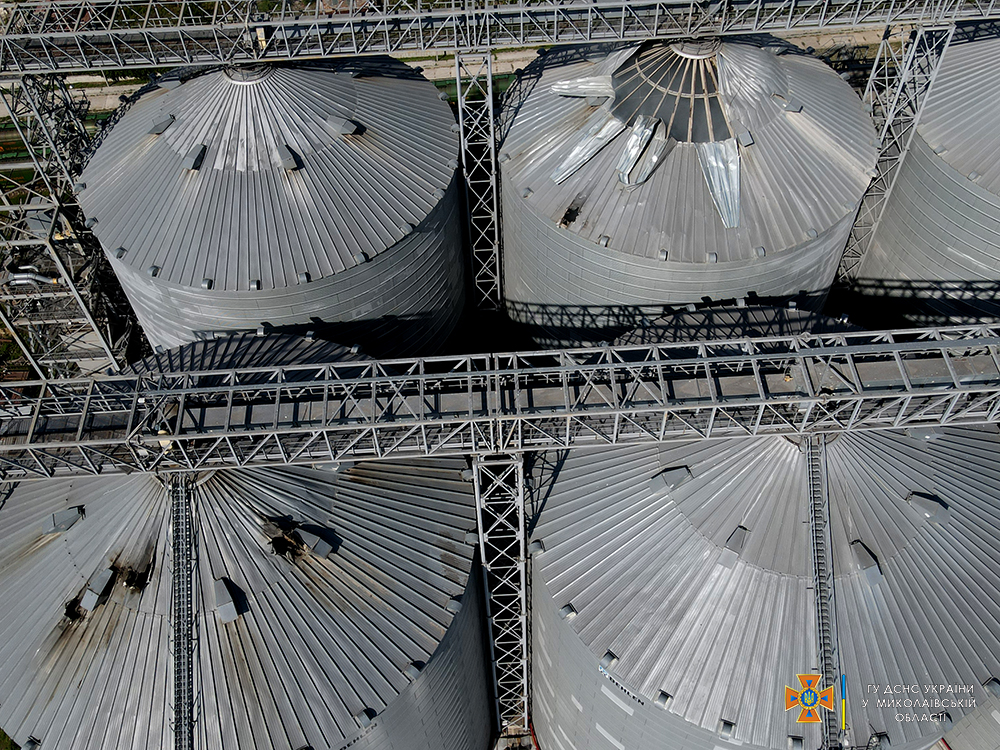
In particular, the occupiers completely destroyed the oldest Ukrainian elevator “Orikhovskyi”, which was still working in the Zaporizhzhia region. damaged silos and a large elevator in Odesa region, mined a granary in Snigurivka in Mykolaiv region.
The terrorist country also destroyed a number of grain terminals in Mariupol, and rocket attacks caused fires at oil terminals in the Mykolaiv region. The silos of the port elevator, as well as the warehouses of one of the port enterprises, were also on fire there.
Some damaged elevators in various regions of Ukraine have resumed operation, and the construction of new capacities has also continued. Construction of “dry ports” for the export of grain to Europe has also begun in Ukraine. In Odesa, they began to expand existing enterprises on the Danube — a direction that after February 24 turned into a lifesaver for the country’s economy.

Ukraine made powerful decisions
«Grain corridor»
On July 22, an event followed by the whole world took place: agreements were signed in Istanbul on the export of grain from Ukrainian ports. Ukraine signed a document with Turkey and the UN. The terrorist country signed a mirror agreement.

As part of the agreements, russian ships should not accompany merchant vessels, and there will be no representatives of russian federation in Ukrainian ports. All inspections of vessels are carried out in Turkish waters by groups of representatives of each of the parties to the agreement, under the general name of the Joint Coordination Center.
The very next day, after the signing of the Istanbul Agreements, russia demonstrated its attitude to international treaties and fired missiles at the Port of Odesa. It is worth noting that one of the conditions of the document prohibits russian federation from attacking ports participating in the “grain initiative”.
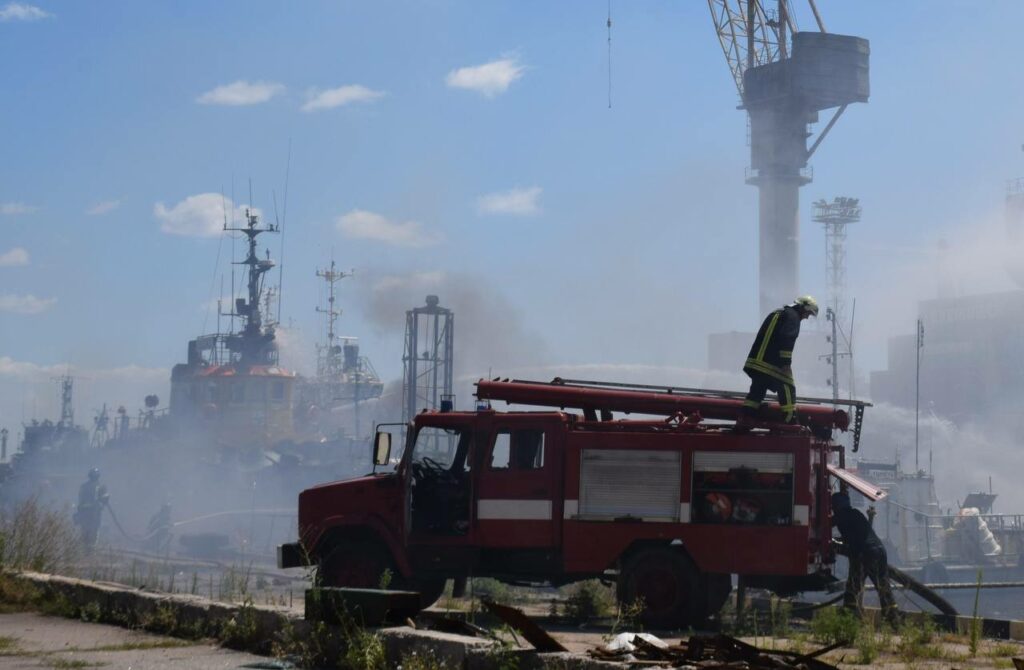
Nevertheless, the export of grain by sea ports continued. As of the end of December, from August 1 (the date of departure of the first ship under the initiative), 605 ships with Ukrainian food, which transported 16 million tons of grain, left the ports of Great Odesa. In particular, 9 ships chartered by the UN World Food Program set off from the ports of Odesa, Chornomorsk, and Pivdennyi, delivering 300,000 tons of humanitarian grain to African countries.
Corn (7 million tons) and wheat (4.7 million tons) were mostly exported through the “grain corridor”.
By month, the export of agricultural products within the framework of the grain initiative amounted to:
• August — 1.7 million tons (the lowest figure);
• September — 3.9 million tons;
• October — 4.2 million tons (the highest figure);
• November — 2.6 million tons;
• December — 3.6 million tons.
Currently, the average number of ships shipped per day is less than 4 units. Russian representatives in the Joint Coordination Center are trying their best to sabotage the inspections of ships. Russia needs this in order to intensify the global food crisis and force Ukraine and its partners to negotiate.
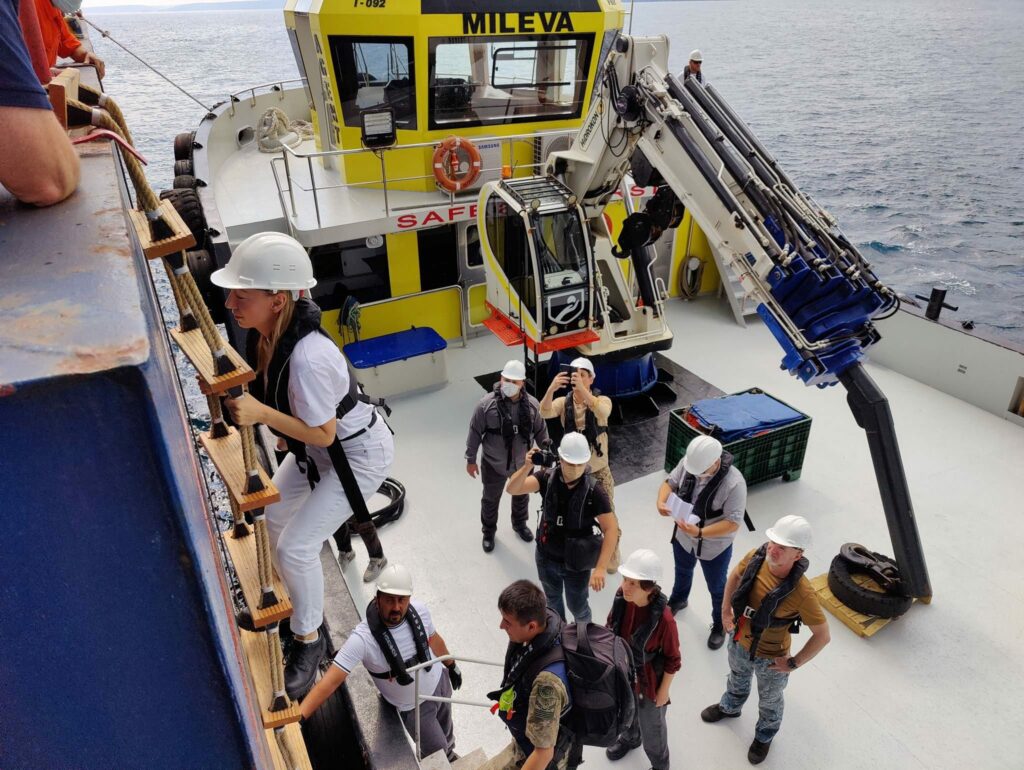
Solidarity Lanes
On May 12, the European Commission presented an action plan called “Solidarity Lanes”. This plan was intended to help Ukraine export agricultural products, taking into account Ukrainian ports blocked by russia.
Despite the EU’s efforts to facilitate border crossing, queues with thousands of wagons and trucks waiting for permission to enter were observed on the Ukrainian side. The average waiting time for wagons was 16 days, and in some places – up to 30 days. Meanwhile, the amount of grain ready for export was only accumulating at Ukrainian elevators.
Among the problems of transportation to the EU are different track widths: Ukrainian wagons are incompatible with most of the EU railway network. Because of this, the goods must mostly be transshipped onto wagons or cars that conform to the standard European route. This process takes many hours, and there are few transshipment facilities along the borders.
During the year, more than 19 million tons of agricultural products were exported from Ukraine by “lanes of solidarity”.
“In November, we broke the record of export of agricultural products through the so-called “Solidarity ways”, reaching the mark of 3.3 million tons. In total, during the 9 months of the war, 19 million tons were already exported by alternative routes. Therefore, further implementation of the “Solidarity lanes” initiative is vital for our exports as an alternative to sea ports,” commented Deputy Minister of Agrarian Policy and Food Markiyan Dmytrasevich.
He emphasized that since the beginning of the war, it was very important to increase the throughput of exports by land. “When we reached the maximum limit of export of agricultural products of 3 million tons per month by alternative routes, it became clear that they need to be expanded. To do this, we started establishing communication and cooperation with European partners,” the official said.
Regarding the export forecasts for the next year, the deputy minister noted that they directly depend on the work of the “grain initiative”, in particular, on the possibility of Mykolaiv port joining it.
“This will be able to significantly increase the possibilities of export of our agricultural products and, what is no less important, will allow to make exports cheaper, because now logistics costs are extremely high,” Dmytrasevich summarized.

Grain from Ukraine
On November 26, on the 90th anniversary of the Holodomor of 1932-1933, President Volodymyr Zelenskyy launched the Grain from Ukraine humanitarian food program.
The project envisages that Ukraine directs part of the harvested wheat to purchase for those African countries where there are already problems of hunger. Part of the export grain can be purchased by the states participating in the project. The program aims to provide at least 5 million people with agricultural products by the end of spring 2023.
The initiative is implemented in partnership with the World Food Programme. The amount of accumulated funds provided by international partners for Grain from Ukraine is about 200 million dollars.
In 2022, within the scope of the initiative, 3 ships with 80,000 tons of wheat left the ports of Odesa. Two of them went to Ethiopia, another to Somalia.
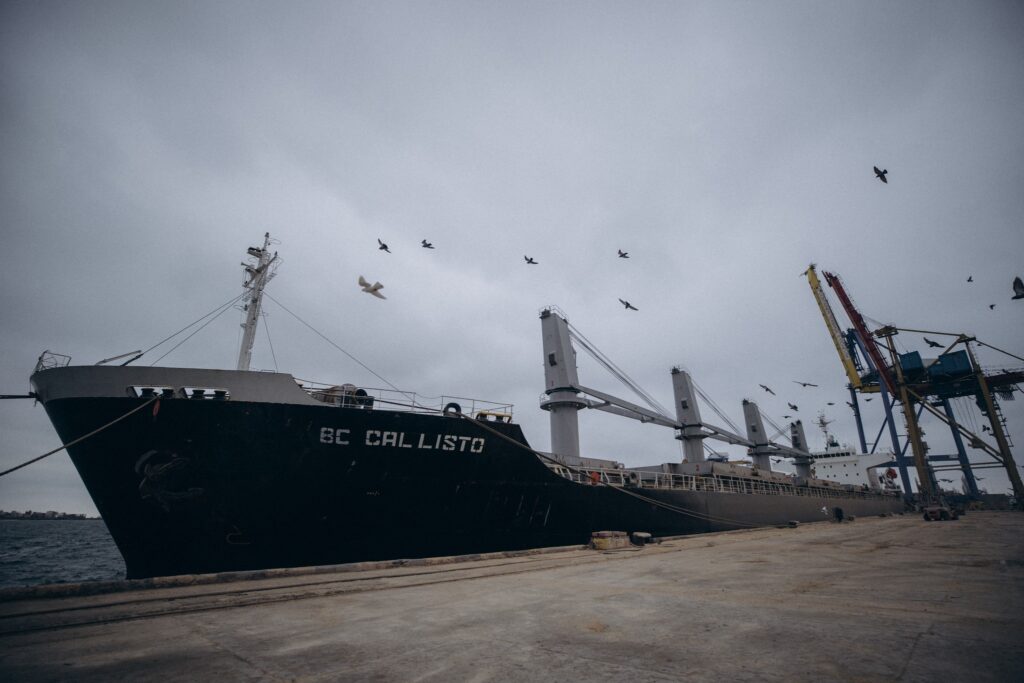
Export
At the beginning of the year, Ukraine reached a record export volume of grain crops. In February, we sent 37% more grain to foreign markets than a year earlier (we are talking about the period from the beginning of the marketing year on July 1 – that is, half a year). 2022 could become a record year for Ukraine in the field of grain exports, at the same level as 2019. But russia, as usual, decided to spoil everything.
In March, when russia had already invaded Ukraine on several fronts, wheat prices on the Chicago Stock Exchange rose to a 14-year high of $12.6 per bushel. There are risks that the volume of production of grain and oil in Ukraine may fall to a minimum in the last 10-15 years due to the aggression of russian federation.
At the end of spring, Ukraine was able to establish more or less stable grain logistics, in particular thanks to the launch of “Solidarity Ways” and the opening of new border checkpoints. After the start of the “grain corridor”, the prices for Ukrainian grain, as well as for the chartering of vessels for its transportation, decreased. Exports began to gain momentum little by little.
So, since the beginning of the full-scale invasion, Ukraine has exported almost 39 million tons of grain, oil crops and their processing products. Among the top three agricultural crops shipped during the 10 months of the war, there is corn — 15.6 million tons, wheat — 8.6 million tons, and sunflower oil — 3.3 million tons, according to the Ministry of Agriculture.
In December, Ukraine exported 6.8 million tons of agricultural products, which is 900,000 tons more than a month earlier.
The total volume of shipments for 10 months by culture:
15.6 million tons — corn (39.96%);
8.6 million tons — wheat (21.98%);
3.3 million tons – sunflower oil (8.37%);
3 million tons – rapeseed (7.75%);
2.7 million tons – sunflower seeds (6.92%);
2.2 million tons – meal (5.8%);
1.7 million tons – barley (4.37%);
1.7 million tons – soybeans (4.48%), 188 thousand tons – soybean oil (0.48%).
If we count by seasons, since the beginning of the 2022/2023 MR (from July 1), Ukraine exported 22.6 million tons of grain and leguminous crops, compared to 32.1 million tons for the same period last year.
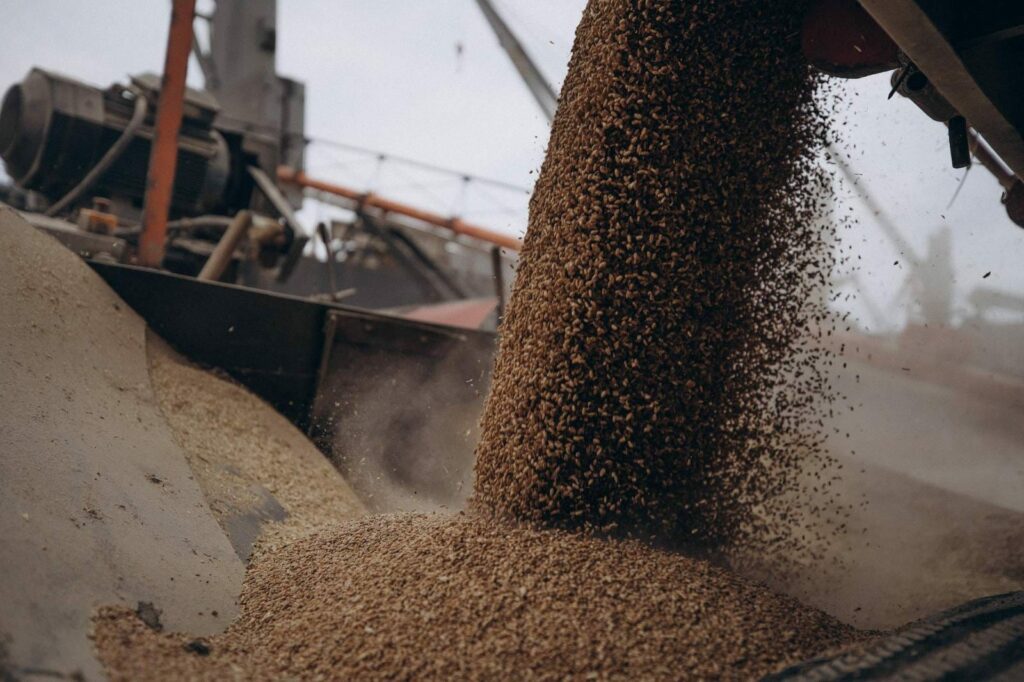
After February 24, Ukraine demonstrated to the world the basics of crisis management. For months, our country fought for the right to be heard on the international stage, talking non-stop about Russian crimes, the blockade of ports and the looming food crisis.
As a result, Ukraine was heard. It was heard in the ports of Romania and Poland, from where Ukrainian grain was sent, when the Ukrainian ports were blocked. Heard in the EU, where they developed an initiative to expand capacity for rail shipments of products. Heard in countries that refused to buy stolen Ukrainian grain and sent russian ships after the famous ship. Heard at the UN, where they supported the grain initiative, and in Turkey, where relevant agreements were signed and which offered itself as a “hub” for inspecting ships with food. From February 24 to today, the world sees and hears Ukraine, and learns from it both at the front and at the negotiating table.





